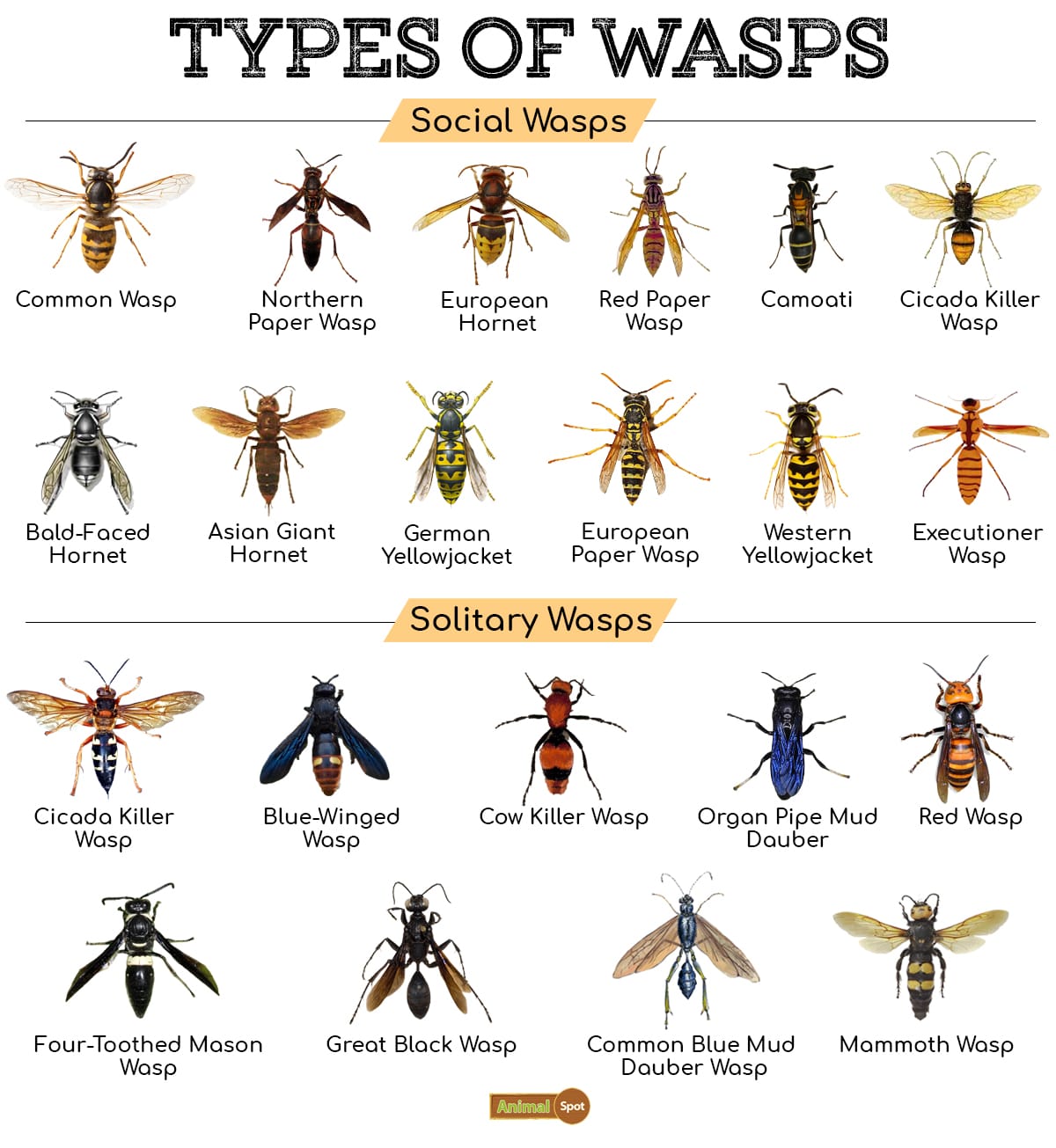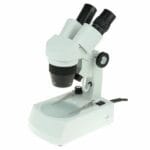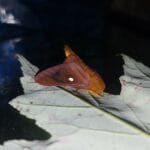A Diverse World of Wasps: Beyond the Sting
Ever find yourself captivated by the sight of a tiny, iridescent wasp, a far cry from the familiar yellowjacket buzzing around your backyard? The world of wasps is amazingly diverse, extending far beyond the common stereotypes. Let’s delve into the fascinating realm of these often-misunderstood insects and uncover the unique roles they play in our ecosystem.
Size, Appearance, and Social Structures: A Spectrum of Diversity
Believe it or not, scientists have identified over 75,000 different kinds of wasps around the world! These insects exhibit a remarkable range of sizes, appearances, and social behaviors. From the minuscule chalcid wasp, barely visible to the naked eye, to the imposing cicada killer, stretching over two inches long, wasps come in a stunning array of forms. While many sport the classic yellow and black, others boast vibrant hues of blue, metallic sheens, or even lack wings entirely.
Just like humans, wasps have diverse social lives. Some, like yellowjackets and hornets, are highly social, residing in organized colonies ruled by a queen. These colonies often construct impressive paper nests found hanging from trees or eaves. Others, like mud daubers and cicada killers, are solitary wasps, leading independent lives and creating nests in burrows or existing cavities.
Beyond the Sting: Ecological Superheroes in Disguise
While their stingers often take center stage, wasps are essential contributors to a healthy ecosystem. Here’s a look at their impressive resumes:
- Pest Control Powerhouses: Parasitic wasps are nature’s pest control specialists. They lay their eggs on or inside other insects, effectively regulating pest populations and benefiting farmers and gardeners.
- Pollination Pros: Move over bees, some wasps are skilled pollinators too! As they flit between flowers, they facilitate plant reproduction, ensuring the continuation of various plant species.
- Food Chain Contributors: Wasps might not top everyone’s menu, but they provide a vital food source for birds, reptiles, and even other insects, playing a key role in the delicate balance of the food chain.
Protecting Our Pollinators: Addressing Conservation Concerns
Sadly, habitat loss and pesticide use threaten many wasp species. It’s our responsibility to protect these valuable insects by preserving their natural habitats and advocating for environmentally friendly pest control methods.
Beyond Dangerous: Uncovering the Most Aggressive Wasp Species
While the Tarantula Hawk boasts the most painful sting, Yellowjackets are often considered the most aggressive due to their easily triggered defensive behavior and tendency to swarm. However, aggression in wasps is not uniform; some species are far more prone to attack than others, even without provocation.
Let’s Strategize Your Aggressive Wasp Article
I. Competitor Title Analysis & Recommendations
Your competitor titles focus on “dangerous” wasps, often interchanging this concept with “aggressive.” This presents an opportunity to differentiate your content by focusing on the “why” behind aggression and offering deeper analysis.
Recommended Titles (Leveraging Trends & Differentiation):
- Beyond Dangerous: Uncovering the Most Aggressive Wasp Species (Focuses on “aggressive” and implies unique insights beyond common knowledge.)
- What Makes a Wasp Aggressive? Behavior, Stings, and Protection Strategies (Explores the “why” behind aggression, offering deeper analysis.)
- Most Aggressive Wasps in [Your Target Region]: Identification and Avoidance Guide (Adds a local angle for increased relevance to a specific audience.)
II. Powerful Key Lines
- Aggression in wasps is not uniform; some species are far more prone to attack than others, even without provocation. (Highlights the nuanced nature of wasp aggression.)
- While the Tarantula Hawk boasts the most painful sting, Yellowjackets are considered the most aggressive due to their easily triggered defensive behavior and tendency to swarm. (Contrasts “painful” with “aggressive” and introduces specific species.)
- Understanding the nesting habits, food sources, and alarm triggers of different wasp species is crucial for avoiding potentially dangerous encounters. (Shifts the focus to practical advice and prevention.)
- Though often feared, aggressive wasps play a crucial role in ecosystems by controlling pest populations and even pollinating some plants. (Presents a balanced perspective, acknowledging their ecological importance.)
III. Structured Context & Important Details
1. Defining “Aggressive”:
* It’s Not Just About Stinging: Aggression in wasps encompasses defensive behavior (protecting the nest) and proactive aggression (e.g., scavenging for food).
* Social vs. Solitary Wasps: Social wasps (Yellowjackets, Hornets) are more prone to aggressive swarming behavior.
2. Top Contenders for “Most Aggressive”:
* Yellowjackets (Genus Vespula and Dolichovespula): Known for nesting in the ground or cavities, scavenging for sugary foods and proteins, being highly defensive of nests, and stinging readily and repeatedly.
People’s Statement: “Yellowjackets are generally considered the most aggressive wasp species, especially when their nests are disturbed.” – ebay.com
* Hornets (Genus Vespa): Larger than Yellowjackets, build aerial nests, possess powerful stings, and can be aggressive when threatened but are less prone to scavenging.
People’s Statement: “Although wasps and hornets have a reputation for being aggressive, some species of wasps are more aggressive than hornets.” – outdoorguide.com
* Paper Wasps (Genus Polistes): Known for their open, umbrella-shaped nests, they are less aggressive than Yellowjackets or Hornets but more likely to sting if directly handled or if their nest is threatened.
3. Factors Influencing Aggression:
* Time of Year: Late summer/early fall is when wasp colonies are at their peak, increasing the likelihood of encounters and aggressive behavior.
* Food Availability: Scarcity can make wasps more competitive and aggressive, especially scavenging species.
* Nest Proximity: Disturbing a nest, even accidentally, is the most common trigger for aggressive wasp behavior.
IV. Unique Insights & Untapped Potential:
* Focus on Wasp Behavior, Not Just Species: Analyze the behaviors that constitute aggression in wasps, adding scientific depth and practical advice for readers.
* Explore the “Why” of Aggression: Explain the evolutionary and ecological reasons behind aggressive behavior in different species. For example, scavenging wasps evolved aggression to compete for resources.
* Address Misconceptions: Many people fear all wasps. Highlight that most species are not aggressive and play beneficial roles. Emphasize respectful coexistence strategies.
* Localize Information: Tailor your content to specific regions by highlighting the most aggressive wasps found locally. Offer region-specific identification and avoidance strategies.
Beyond the Sting: Unmasking the Most Common Wasp Species
Those yellow and black striped insects that always seem to crash picnics and backyard barbecues? Those are likely yellow jackets, the undisputed champions of the wasp world, at least in the United States. With 16 different species buzzing around, they’re a common sight, especially near their nests, which they often build near human activity. And if you get too close? Well, they’re not known for their patience, and their stings are memorable, to say the least.
But here’s the thing: yellow jackets, as common as they are, are just a small branch on a massive wasp family tree. Imagine over 100,000 different types of wasps scattered across the globe! From tiny parasitic wasps to large, solitary hunters, the world of wasps is incredibly diverse. They belong to a group called Hymenoptera, which also includes those busy bees and organized ants.
Now, you might be thinking, “Why should I care about all these different wasps?” Well, besides the fact that some of them can be a real pain, wasps actually play some pretty important roles in the environment. For one, they’re natural pest controllers, gobbling up other insects that might otherwise damage crops or become a nuisance. Some wasps even help pollinate plants, just like bees! And of course, they’re a food source for other animals, keeping the whole ecosystem in balance.
The key takeaway here? Not all wasps are created equal. Knowing how to tell them apart can be really helpful in understanding their behavior and figuring out the best way to deal with them, if you need to at all. After all, we share this planet, and a little knowledge can go a long way in peaceful coexistence.
Unveiling the Gentlest Stingers: Exploring the Least Aggressive Wasp Species
Don’t let their buzzing reputation fool you, there’s a surprising diversity in wasp temperament, with some species being remarkably peaceful and beneficial to their ecosystem. While Yellowjackets and Hornets often steal the spotlight for their aggressive behavior, certain wasp species are known for their gentle nature and crucial roles in pest control and pollination.
Peaceful Wasps You Might Encounter
- Mud Daubers: These solitary wasps are like the introverted artists of the wasp world. They prefer quiet corners, building their unique mud nests and rarely bothering with humans. Unless directly threatened, they’re unlikely to sting.
- Paper Wasps: These wasps are like friendly neighbors, keeping to themselves but protective of their homes. They build nests under eaves or in sheltered spots and, while they may buzz around, are fairly docile and usually only sting if their nest is disturbed.
- Velvet Ants: Don’t let the name fool you; these intriguing insects are actually wasps, not ants! The females are entirely stingless and generally peaceful. They favor dry, sandy environments and are often spotted scurrying about in search of food.
- Polistes Wasps: Even in the world of social wasps, some species are more laid-back than others. Polistes wasps are known for their relatively calm demeanor compared to their more defensive cousins. They often build their nests in shrubs or trees, peacefully going about their business.
Understanding Wasp Behavior
It’s important to remember that even the most docile wasp species can become defensive if they feel threatened or if their nest is disturbed. Scientists are still learning about the complexities of wasp behavior, but it’s clear that different species exhibit a wide range of temperaments. Further research is shedding light on the factors that influence wasp aggression, including genetics, environmental conditions, and even their diet.
While we may never fully understand the minds of these fascinating creatures, appreciating their diversity and learning to coexist peacefully is a step in the right direction!
What is the Least Aggressive Wasp Species?
From the striking red velvet ant (actually a wingless wasp!) to the elegant paper wasp, discovering the least aggressive wasp species reveals a fascinating world of insect behavior and ecological balance. Understanding the difference between docile and defensive wasps can help homeowners coexist peacefully with these essential insects, avoiding unnecessary extermination and promoting biodiversity.
Remember, wasps are rarely more dangerous than bees and will generally leave humans alone if we leave them be as well. Of the thousands of wasp species in the US, you’re more likely to cross paths with some type of yellow jacket wasp or maybe a hornet. The most important thing to remember is to give a wasp nest a large berth!
If you’re concerned about the risk of rabies from raccoons, read this to stay informed and protect yourself. If you’re wondering whether raccoons hibernate during the winter months, click here to learn more about their hibernation habits.
















